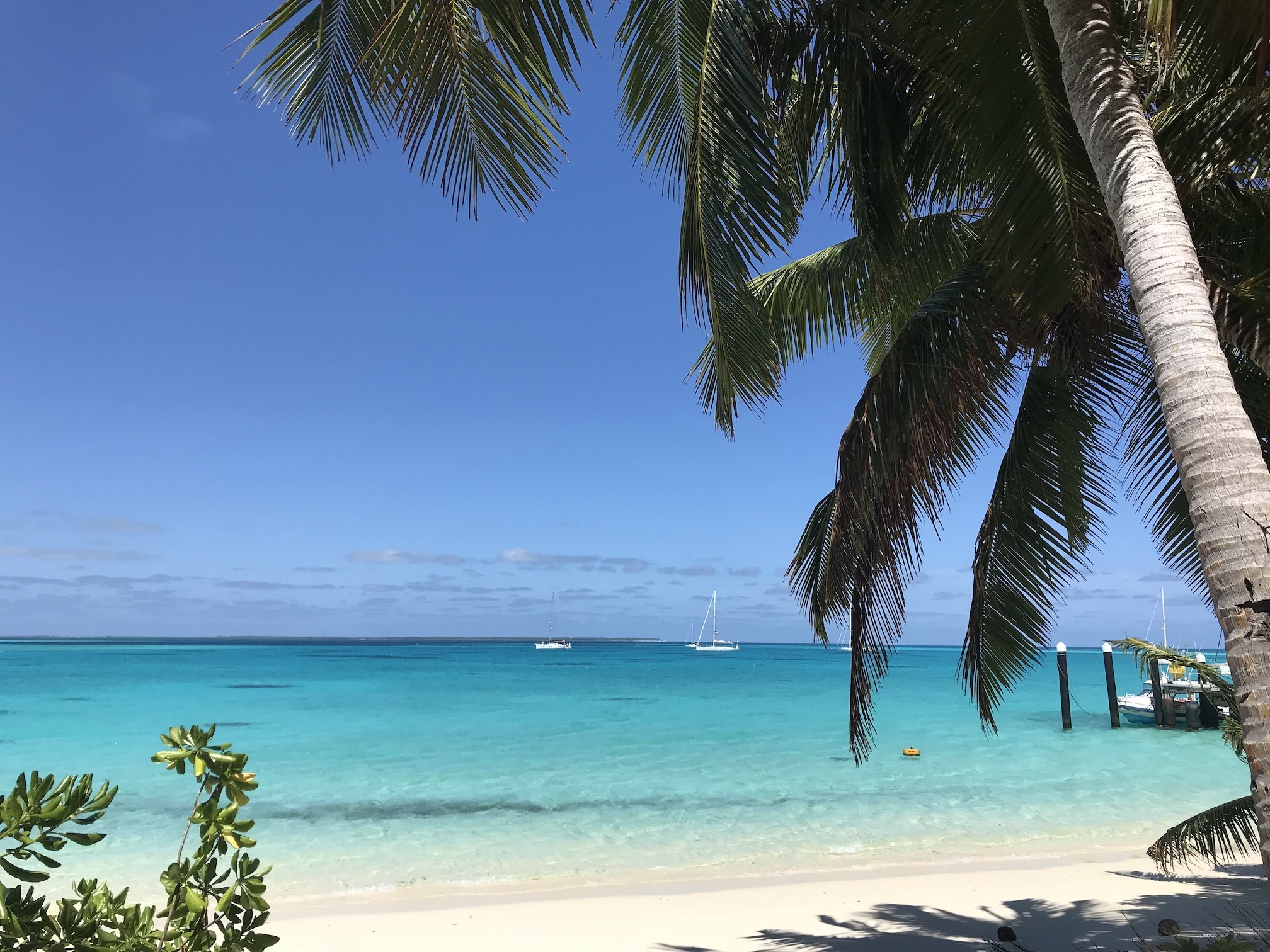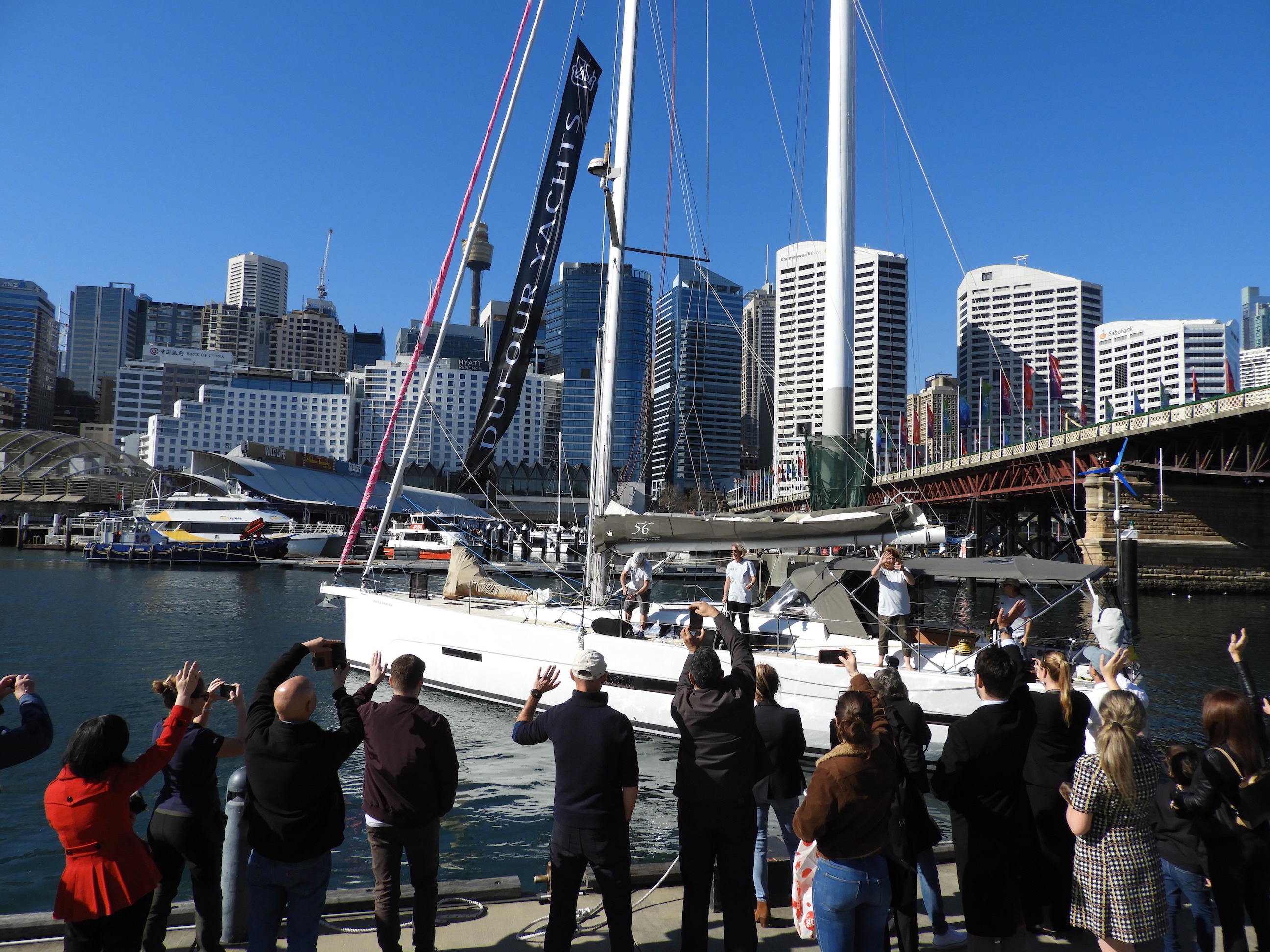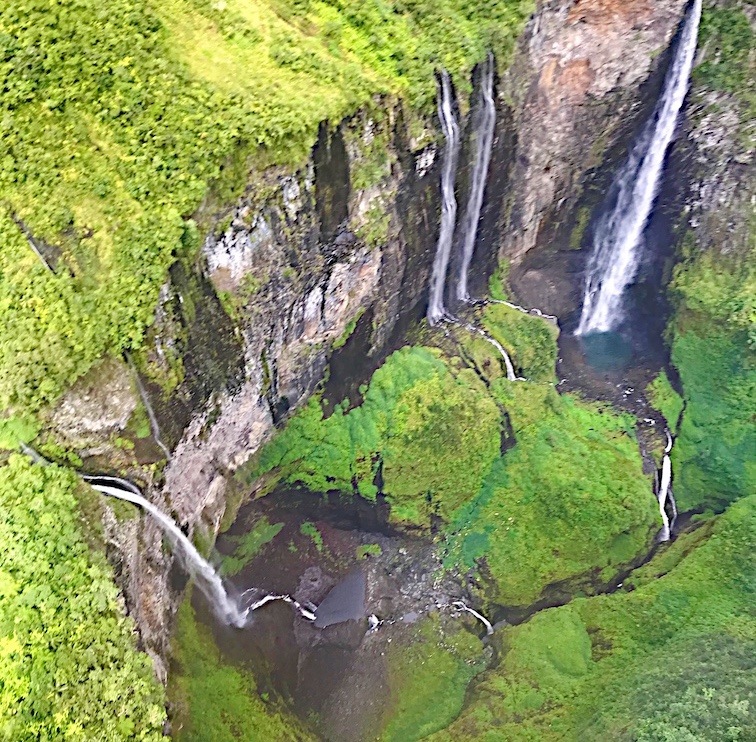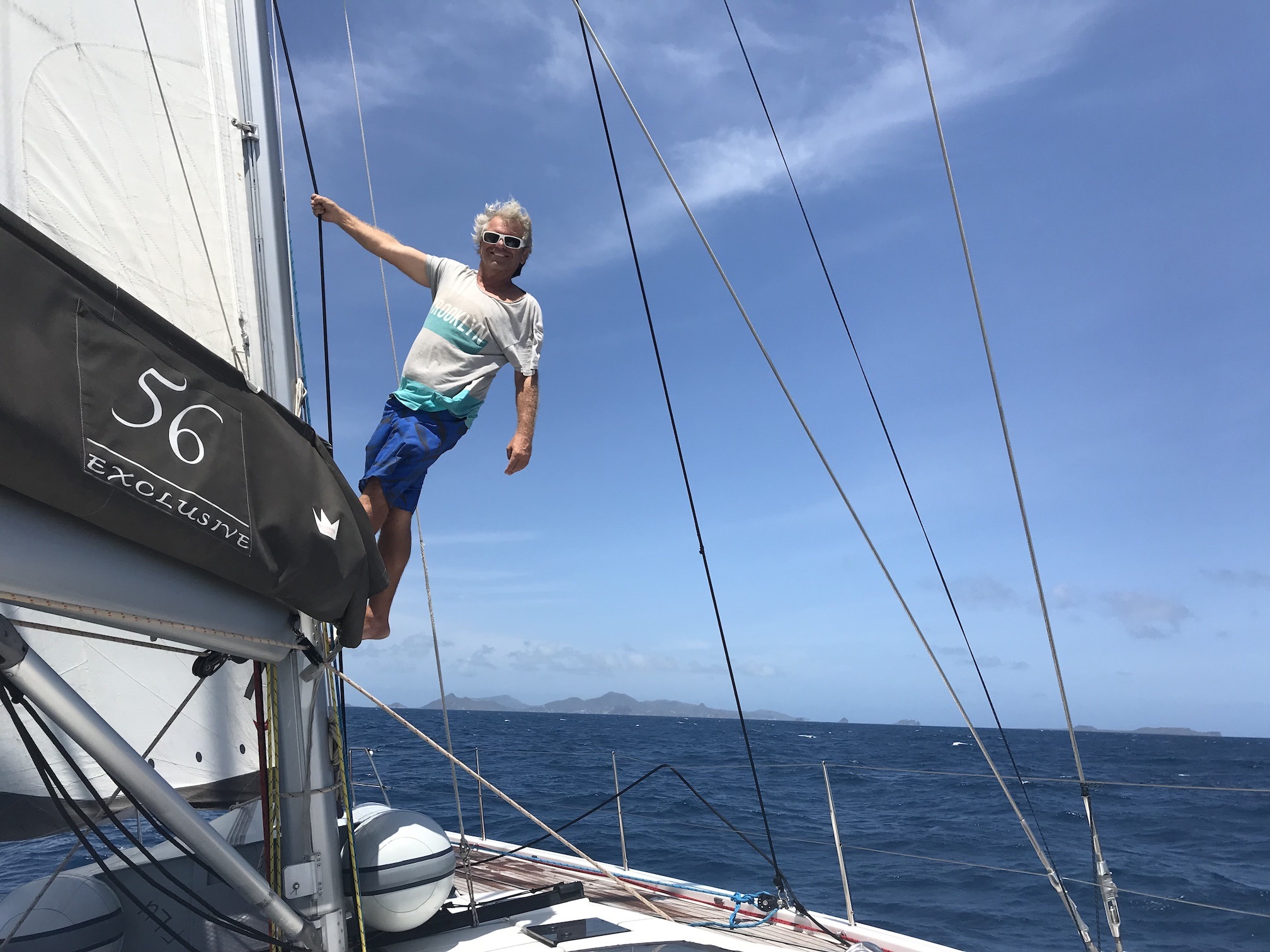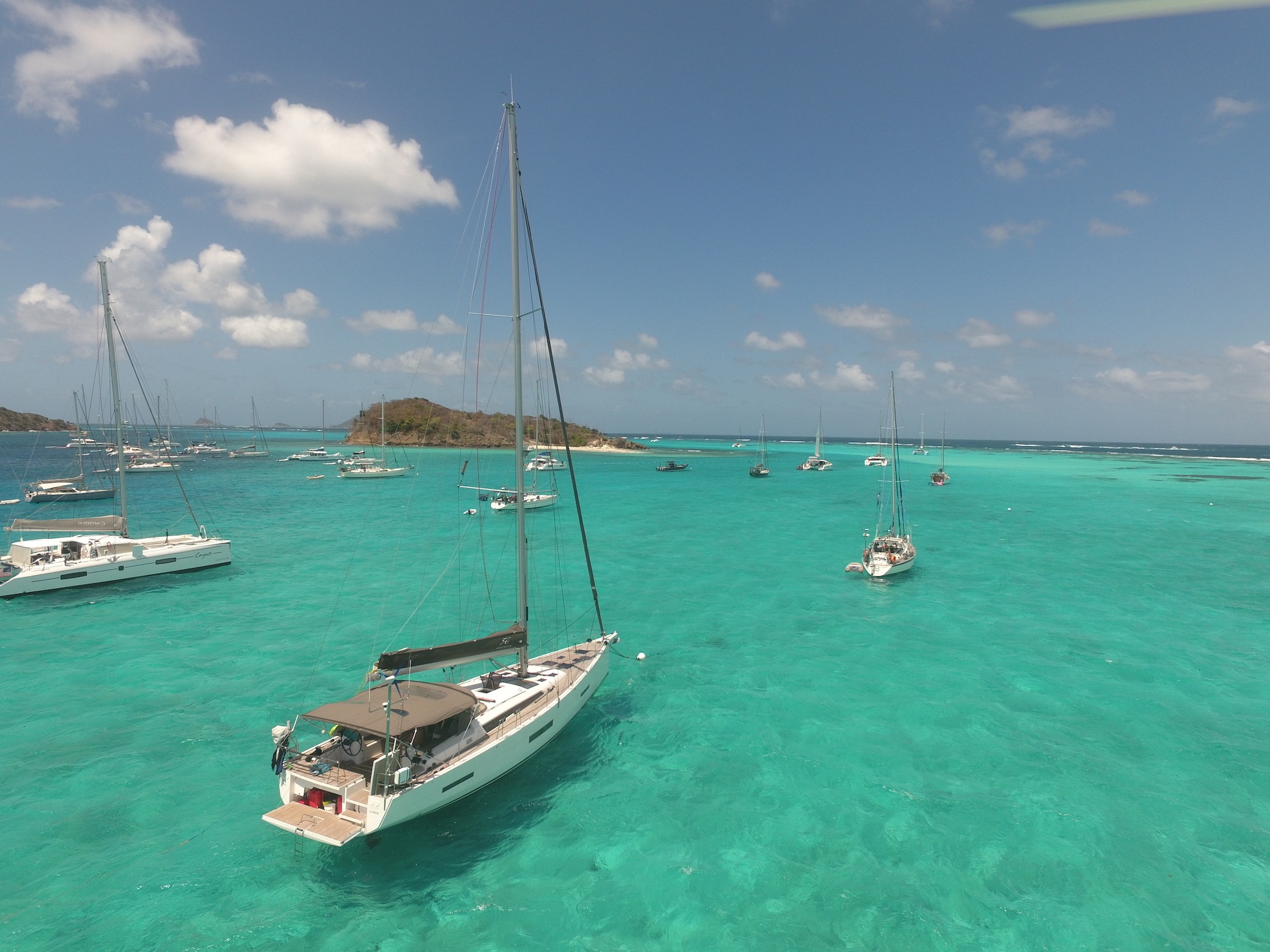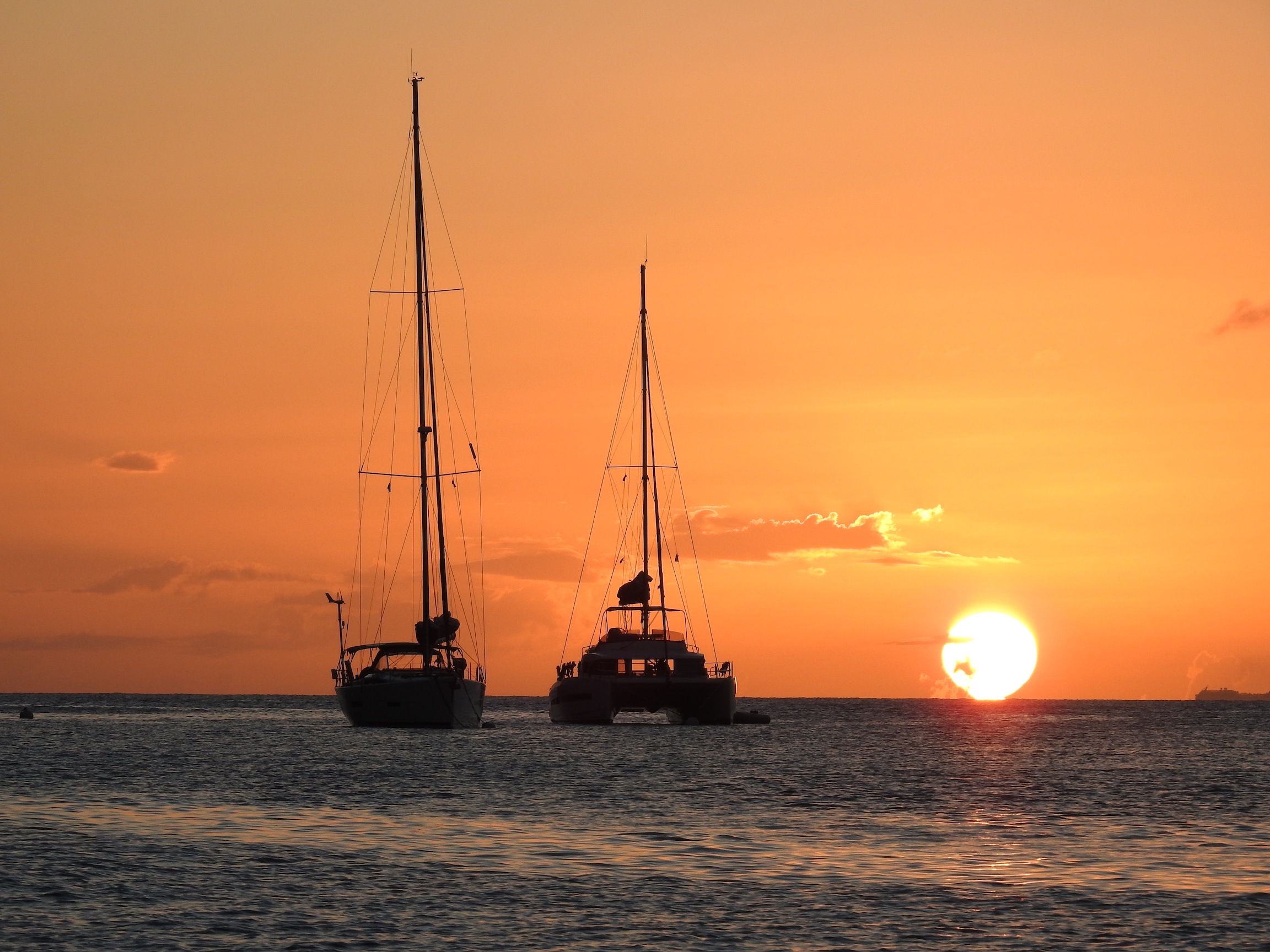The long way home
Having dreamed about sailing around the world since he was big enough to hold a tiller, Matt Hayes is halfway to achieving his goal.
Written by Syd Seymour and Matt Hayes
25 October 2019
Advertisement
A small but rowdy crowd gathered on the dock one July morning in 2018 at the Australian National Maritime Museum to farewell the crew of Influencer, a Dufour 56 Exclusive that was packed to the gunnels with everything necessary to cross the Indian, Atlantic and Pacific oceans. There were butterflies, even for seasoned pro Matt. He had done a swag of Hobarts, Admirals Cup, Kenwood Cup and the big daddy of them all, the Olympic games. But this was something completely different, and a huge commitment.
The planning involved to get to the starting gate was intense. Plotted with military precision on a Gantt chart, things to be ticked off included spares, servicing, repairs, electronics, backup, knowledge, medical, visas, vaccinations, booking marinas, getting affairs in order at home with business etc, checking and rechecking everything, provisioning, storage, safety equipment and safety procedures. Then there were some shakedown sails, culminating in a sail to Lord Howe Island. The plan was to join the World Arc Rally run by the World Cruising Club, with two starting points, one in St Lucia in the turquoise waters of the Windward Islands of the Eastern Caribbean, and the other in Darwin. We were leaving in time to join from Darwin in September.
As Influencer pulled away from the Sydney dock to tears and cheers, the reality hit home. We were sailing around the world!
Advertisement
Legs 1 and 2 – Darwin to Lombok, Lombok to Christmas Island
We slipped out of Darwin after meeting up with fellow Arc participants, in light winds and reaching conditions. It was uneventful, but as we approached Indonesia, the amount of rubbish in the water increased and friendly fishermen approached to say hi. Then we hit the notorious Lombok Strait, running into eight knots of current. We were in Lombok shortly after the earthquake, so it felt good to put some money back into their economy. The people were so warm and friendly but the amount of litter was extreme.
It was good to get moving across the Indian Ocean, but first had to battle Lombok Strait. At times we were doing 15 knots upwind. It was so rough you had to angle the boat beam onto the waves as you got swept windward in the roaring eight knot current. The waves were like nothing Matt had ever experienced – and that’s after 18 Bass Strait crossings. Once out into deeper water, the seas calmed and we rode the trade winds to Christmas Island. Images of asylum seekers and detention centres filled our heads but in reality, this place is a gem. It is wild and rugged but naturally beautiful with some of the friendliest Australians you’ll ever meet.
Leg 3 – Christmas Island to Cocos Keeling Islands
After a short 48 hour stop we faced another 600 mile leg to Cocos Keeling Islands – another Australian territory in the Indian Ocean. Regarded by the locals as Australia’s cheapest aircraft carrier – this place is definitely one of the most beautiful places we have ever seen. It has a breathtakingly spectacular lagoon, incredible snorkelling, a crazy golf course across the runway, coconut palm fringed beaches, crabs, and a fascinating history. We learned about the Clunies-Ross family’s connections here and Australia’s role in WWI, with the HMAS Sydney sinking the German ship Emden off Direction island.
One thing that shocked us was the amount of plastic that washes up on Direction Island. Much of it apparently comes from Indonesia and accumulates on this beautiful strip of land, and in places it is knee deep. We all found it quite distressing. It has certainly hardened our resolve to do something about this.
Leg 4 – Cocos Keeling Islands to Mauritius
We welcomed Olympic gold medallist Jenny Armstrong for the 2450 nm leg across to Mauritius. We were told we would get trade winds the whole way which we did, but we didn’t expect gales on eight of the 12 days meaning we were hand steering most of the time. It wasn’t the wind strength that was the issue but the diabolical sea conditions with ground swell from the Southern Ocean mixed in with trade wind swell and waves and often a north-westerly swell from a weather event in the higher latitudes, meaning a very confused seaway.
We had eight days in Mauritius and spent many of them exploring. We learned about the extinct dodo bird, sampled the most amazing foods so far, loved the rich Mauritian culture and friendly people from multiple religions living in peace and harmony.
Leg 5 – Mauritius to Richards Bay via Reunion Island.
From Mauritius we had a short 170 nm blast to Reunion island, a French department (not territory) where croissants, vin blanc, Matt’s son Josh and the famous cirques greeted us. A helicopter ride around the cirques and volcanos was an absolute highlight.
The next leg from Reunion to Richards Bay on the north east coast of South Africa is by far the most hazardous on the circumnavigation. At 1450 nm one has to plan as best as possible around the weather, bearing in mind that the east coast of Africa and the Mozambique channel are notorious for cut off lows that can produce winds of up to 50 knots with little warning. From the departure planning point of view one has to have planned bolt holes in Madagascar and Mozambique – and watch the weather carefully. We employed a professional weather router, Sebastien from Wetterwelt in Kiel Germany, who provided regular updates and waypoints. Luckily we nailed the weather, strong northeasterlies giving us a clear and fast run into Richards Bay. Others were caught and holed up on the south east coast of Madagascar – where they had a wonderful few days spotting lemurs.
In this area shipping traffic picks up, you really need an AIS. Ours had been only working intermittently across the Indian but fortunately we had it fixed in Reunion. We were able to contact passing ships on channel 16 / vhf to check their intentions and in all cases where we were on a possible collision course all ships altered course to avoid us.
Once tucked away in the Zululand Yacht Club in Richards Bay, we were able to have a break and visit some game parks. It was also good to be able to get some work done after the long crossing. It’s a fraction of the cost of Sydney and the quality is just as good.
Leg 6 – Richards Bay to Cape Town
Having many South African sailing mates – particularly good mate Clinton Wayde Lehmann – Matt was well briefed on this coast and the Agulhas current. The weather comes through quick and fast here and unless you like going upwind into 40 knots with a four knot current against you – you take time to be safe. We got a short weather window which enabled us to do a quick hop down to Durban – where we had a lot of fun learning to master the Segway. Regarded as one of the most dangerous cities in the world – we found it very friendly with great yacht clubs, beautiful beaches, and modern shopping centres. From Durban you need a minimum three-day window to get to either East London or Port Elizabeth, and for this leg you need either no wind or a northerly wind. We got lucky and after three days in Durban we got the thumbs up from Sebastian and headed south. 36 hours of motoring followed before a sou’easter filled in with 15-25 knots that saw us round Cape Agulhas and then we had a nice downwind sail to Cape Town apart from a couple of hours of 45 knots on the beam off False Bay.
There are two weather models one can follow round the world, the GFS – low resolution and free service, or the Euro model, which is a paid service. We relied on the Euro most of the time using an app and downloading via satellite.
Sailing into Cape Town is quite an experience and one that all mariners should try and experience once in their lifetime. The scenery is magnificent and we had a great sense of satisfaction knowing we made it round South Africa and the Cape and that the worst is behind you. Here we had a six week break giving us time to get work done on the boat and fly home for Christmas.
Leg 7 – Cape Town to St Helena and Ascension Island
The official route for the next leg of the World Arc was from Cape Town across the South Atlantic to Salvador in Brazil, via St Helena. We came up with an alternative route, and four other yachts having done similar research also came up with the same route. So from Cape Town rather than head straight to St Helena Island we set off to Walvis Bay in Namibia.
Coastlines around the world never cease to amaze, but the Namibia coast was something else – incredible spectacular sand dunes, beautiful turquoise water, crystal clear skies, and sailing amongst literally thousands of friendly seals who would swim alongside and follow the boat. Walvis Bay is a gateway shipping port for many African nations and as such was not the most attractive port, but one feels safe, the people are friendly, and the bay full of flamingos around the corner were magnificent. We had a spectacular tour in the desert climbing sand dunes, seeing a 1000-year-old plant, drove through the lunar landscape where many movies have been made, including Mad Max, and we were chased by a scorpion. We also stocked up with incredible meat in the Germanic town of Swakopmund.
From Walvis bay it was a mainly downwind sail of 1250 nm to St Helena Island – a British territory famous for Napoleon Bonaparte’s imprisonment, and Jonathan the tortoise – the world’s oldest living animal. A welcome stop for yachties, highlights include climbing 699 steps of Jacobs ladder, majestic hiking trails with spectacular views, and the most incredible underwater experience of our lives – swimming with whale sharks (twice).
From St Helena our group of five yachts – two catamarans from the USA and three monohulls – one British, one Norwegian and ourselves, decided on a pit stop at Ascension Island. 600 nm north northwest. We didn’t really know what to expect but it turned out to be one of the highlights of our trip so far. This tiny volcanic island is a British military base shared with an American military base and the BBC African ground station. It’s raw, with next to no tourism other than the odd yacht that bothers to stop, but we all fell in love with this place. We loved the beautiful protected bay and the inquisitive turtles all around our boat. Then there’s the only man-made cloud forest in the world – created by none other than Charles Darwin. There are magnificent walking tracks – the best on the trip – an incredible sooty tern colony, and a cemetery full of yellow fever victims. The runway at the local airport was built long enough for the space shuttle to land, and apart from sailing, the only way you can get there is via military jet from UK – which will sometimes allow a few tourists on board.
Leg 8 – Ascension Island to Fernando de Noronho and Cabedelo
From Ascension it was 1200 miles punching through the ITCZ to the jewel in Brazil’s crown, the archipelago of Fernando de Noronho. It is truly spectacular, with idyllic beaches, the best surf in Brazil, great walks, amazing food and jaw-dropping sunsets. The only negative is that the anchorage is exceedingly rolly, making it really hard to move about the cabin. It was a relief to move on to Cabedelo, with its excellent marina run by two French expats. Matt’s two sons, Josh and Alex joined us there, and we reunited with the other Arc yachts who had been to Salvador. It’s a sleepy but pleasant town and neighbouring town Jose Pessoa, where the airport is, is the second greenest city in the world behind Paris. As Carnivale was on we all went to Recife and enjoyed what was a spectacular yet overwhelming experience. The crowds, the noise, the dancing, the colour. So intense!
Leg 9 – Cabadelo to St Lucia via French Guyana and Grenada
From Brazil we headed up the east coast watching out for those pesky crab pots, and had a little ceremony as we crossed the Equator before hitting the east trades 15 to 20 knots aft beam in 2 knots current. We had a fascinating stop in French Guyana’s iles du Salut (Salvation Islands) Famous due to the book/film Papillion it was a penal colony and hauntingly beautiful. The old cells are now thankfully being taken over by Mother Nature but it makes you shiver looking at them.
Enroute to Grenada, in the Windward Islands of the Eastern Caribbean, we set a course to avoid oil fields, Trinidad and possible pirates. All went well and we arrived in verdant Grenada with no hiccups. We started our exploration of the Caribbean , swimming under waterfalls, snorkelling at the world’s first underwater statue garden and devouring delicious seafood, Caribbean specialties and curries. The water is azure blue, the people are so friendly and we are in one of the best sailing grounds in the world.
We finish the first half of the Arc when we sail into St Lucia, a few islands up from Grenada. Most of the fleet has finished their circumnavigation, it is a time for celebration and sadness as we say our goodbyes over a Caribbean rum or three.
Advertisement
Advertisement
Advertisement


